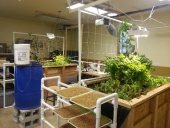
 1
1




 2
2




"You must be the change you want to see in the world." "First they ignore you, then they laugh at you, then they fight you, then you win." --Mahatma Gandhi
"Preach the Gospel always, and if necessary, use words." --Francis of Assisi.
"Family farms work when the whole family works the farm." -- Adam Klaus
 1
1




“Enough is as good as a feast"
-Mary Poppins




"You may never know what results come of your action, but if you do nothing there will be no result”
How Permies.com Works
Be Nice
 1
1








Terry Lee wrote: I’m also having a hard time finding green wood, local trees, and a saw miller. R-Scott you know where to get them in KS?
"You must be the change you want to see in the world." "First they ignore you, then they laugh at you, then they fight you, then you win." --Mahatma Gandhi
"Preach the Gospel always, and if necessary, use words." --Francis of Assisi.
"Family farms work when the whole family works the farm." -- Adam Klaus




R Scott wrote:
Terry Lee wrote: I’m also having a hard time finding green wood, local trees, and a saw miller. R-Scott you know where to get them in KS?
Those I have helped have had their own on-site timber. I have an Amish saw mill down the road from me and they can't get enough logs. Most of their logs come from Missouri.
 I thought KS is Z4-5, where is it in Z6? I'm in 4.
I thought KS is Z4-5, where is it in Z6? I'm in 4.




"You must be the change you want to see in the world." "First they ignore you, then they laugh at you, then they fight you, then you win." --Mahatma Gandhi
"Preach the Gospel always, and if necessary, use words." --Francis of Assisi.
"Family farms work when the whole family works the farm." -- Adam Klaus








"You must be the change you want to see in the world." "First they ignore you, then they laugh at you, then they fight you, then you win." --Mahatma Gandhi
"Preach the Gospel always, and if necessary, use words." --Francis of Assisi.
"Family farms work when the whole family works the farm." -- Adam Klaus








"You must be the change you want to see in the world." "First they ignore you, then they laugh at you, then they fight you, then you win." --Mahatma Gandhi
"Preach the Gospel always, and if necessary, use words." --Francis of Assisi.
"Family farms work when the whole family works the farm." -- Adam Klaus




 ....As far as a live wall, got me? I'll get into the agriculture once I got the place built
....As far as a live wall, got me? I'll get into the agriculture once I got the place built 








Terry Lee wrote:
He wants $5 for a 14" x 18" X 36" bale. If I did my math right to covert the 14" x 36" or ~500/144 sq-in or 3.5 sq-ft. That's $5/3.5 or ~ $1.50 sq-ft. That's 3X fibergass ($.50 sq-ft) or mineral wool (roxul) $.70 sq-ft both @ R-15.
What is the r-value of this stuff for codes and certification (energystar, LEED, etc) ?




Ron Tam wrote:
Terry Lee wrote:
He wants $5 for a 14" x 18" X 36" bale. If I did my math right to covert the 14" x 36" or ~500/144 sq-in or 3.5 sq-ft. That's $5/3.5 or ~ $1.50 sq-ft. That's 3X fibergass ($.50 sq-ft) or mineral wool (roxul) $.70 sq-ft both @ R-15.
What is the r-value of this stuff for codes and certification (energystar, LEED, etc) ?
Gathering this info myself now. Per this, R-value for straw bales is 26-30 for an 18" thickness. So based on your comparison, it's about twice the R-value and twice the cost of Roxul (aside from 4x the wall thickness). So almost equivalent except that you have to factor in the lumber cost saved and also the actual lesser R-value in the Roxul scenario due to the wood framing. Still, personally I don't see a compelling reason to go with straw bale yet ... If anyone has info or links that would help me understand why straw bales might be more economical, I would appreciate it. (I understand it is more eco-friendly)
"Testing for R-value has been conducted several times. Only a few tests of full-scale walls (rather than bales) have been conducted (by Oak Ridge National Labs and the Technical University, TUNS, of Nova Scotia). The R-value for these walls were found to be between 26 and 30, about double that which can be expected from a wall built to most code requirements. (Note that a 2x6 wood frame wall with R-20 batts has an R-value of about R-13 when the thermal bridging through the studs is considered). Strawbales are comprised of over 90% air voids, easily connected to one another." https://buildingscience.com/documents/digests/bsd-112-building-science-for-strawbale-buildings

 2
2




- Tim's Homestead Journal - Purchase a copy of Building a Better World in Your Backyard - Purchase 6 Decks of Permaculture Cards -
- Purchase 12x Decks of Permaculture Cards - Purchase a copy of the SKIP Book - Purchase 12x copies of Building a Better World in your Backyard
 2
2




If there is one thing the Wizard of Oz has taught me, it is not to trust school teachers on bicycles.

|
Being a smart ass beats the alternative. This tiny ad knows what I'm talking about:
Freaky Cheap Heat - 2 hour movie - HD streaming
https://permies.com/wiki/238453/Freaky-Cheap-Heat-hour-movie
|






